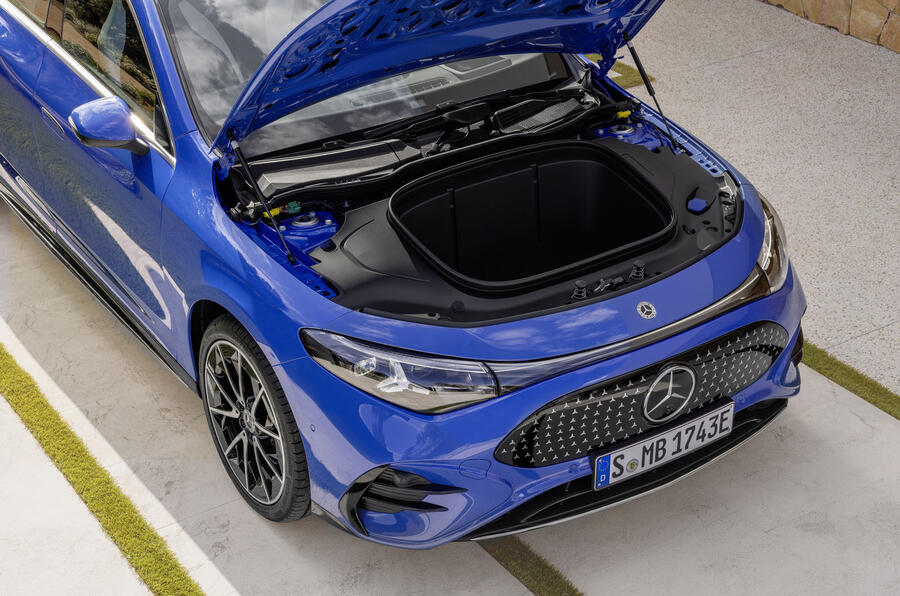For example, the wheels are set further in-board of the arches than its predecessor. Small inlets on the front bumper (and corresponding outlets at the rear) guide the flow of air around each corner, relatively undisturbed by the alloy wheels’ flush-faced designs.
The efforts net a slippery drag coefficient (Cd) of 0.21, just behind that of the EQS (0.20) and ahead that of the Tesla Model 3 (0.22).
The CLA EV’s new rear-mounted permanent magnet motor is also significant to its efficiency. It uses a new silicon-carbide inverter that brings greater output in a smaller package, reducing weight, while the engineers claim its torque density is boosted by the magnets being inserted in a double-V formation, concentrating their field.
The motor also gets a Porsche Taycan-style two-speed gearbox, rather than the usual single-speed reduction gearing. This has a short (11:1) first ratio for improved off-the-mark acceleration and better efficiency at town speeds and a significantly longer (5:1) second ratio for less consumption at a cruise.
The powertrain puts out 268bhp, which allows the CLA 250+ to complete the 0-62mph dash in 6.7sec.
The four-wheel-drive CLA 350 4Matic with EQ Technology gets an additional 107bhp motor with a single-speed gearbox on its front axle, giving a combined output of 349bhp. This cuts its 0-62mph sprint time down to 4.9sec, making it quicker in a straight line than the V8-engined C55 AMG of 20 years ago.
This additional motor is decoupled from the front axle when it isn’t needed, reducing energy losses to friction by 90%. This means the four-wheel-drive CLA EV can still manage 478 miles per charge – a smaller disparity compared with the rear-driven version than is typical of most other EVs.
Braking primarily relies on the motors’ regenerative effect (which can provide up to 200kW of stopping power), helping to keep the battery topped up.


